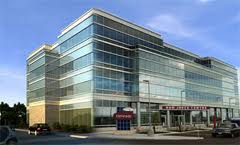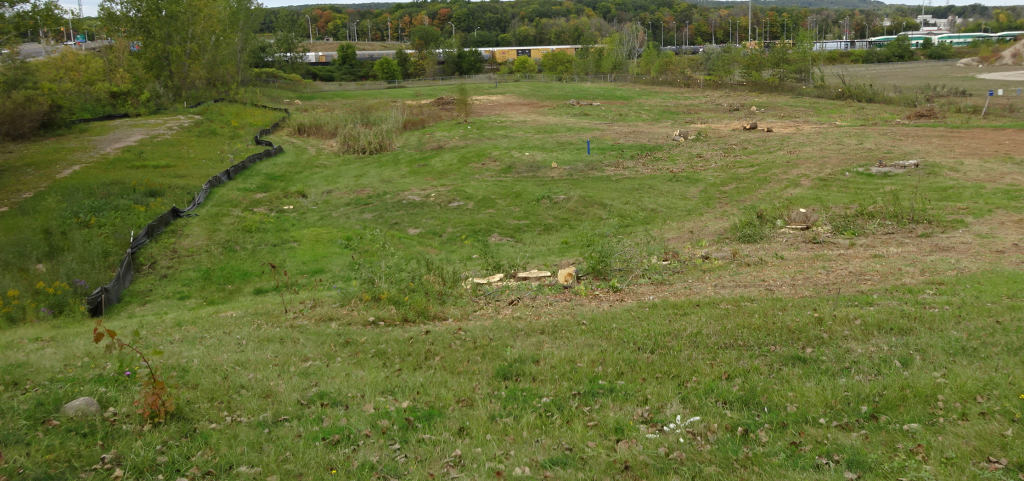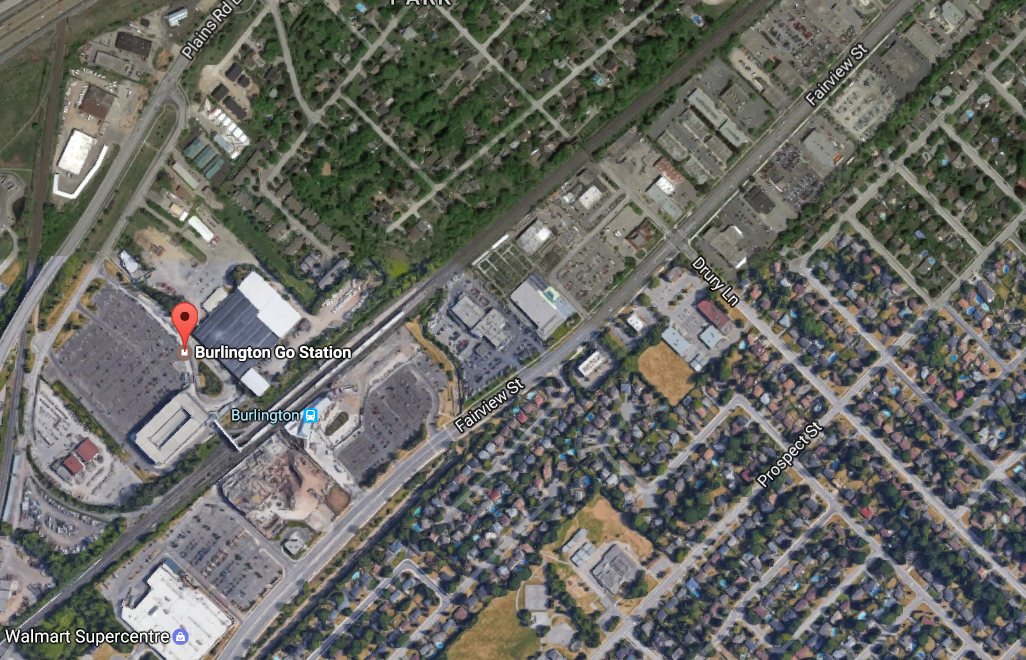 By Pepper Parr
By Pepper Parr
December 19th, 2016
BURLINGTON, ON
There is a developer who has completed a land assembly and is now meeting with the planning department.
And the project isn’t going to go anywhere in the immediate future – because the concept of a mobility hub and an Innovation District are still being thought through within the Planning department.
At a recent council meeting Burlington Economic Development Corporation Executive Director, Frank McKeown pointed out that the city needs to understand innovation districts from a land use perspective.
First problem is that the city’s Official Plan does not recognize the concept of an Innovation District.

Something along these lines was planned for Burlington’s downtown core – but McMaster stiffed the city when a nicer deal came along.
The Burlington Employment Lands Policy Recommendations and Conversion Analysis report describes the general features of an Innovation District and provides a series of case studies and research. In general, the research affirms that innovation districts are composed first of an economic development marketing strategy, and that land use policy interventions are used to:
• Implement the vision
• Address land use compatibility
• Provide incentives
There is a role for land use planning policy to support the initiative by enabling area specific planning and working closely with any given anchor institution.
The success of innovation districts requires a mix of attributes and features. The right institutional anchor in place, the unique features of the area (old waterfront, older industrial area, natural heritage/open space), and transit and active transportation options are all critical to the success of an innovation district.
Planning staff have considered the recommendations offered in the Burlington Employment Lands Policy Recommendations and Conversion Analysis report and have determined that there is an opportunity to identify one or more potential innovation districts in the city.
The first step in any innovation district process is the development of the economic development strategy and brand designed to leverage the economic, networking and physical assets of the area. Where a strategy is developed an area specific plan should be initiated in support of the strategy that considers critical elements in support of the district including connectivity and access to the District.
After reading that paragraph you know that there isn’t going to be a near future answer to any of the issues raised.

Station West – the ADI Development Group project that is currently being marketed.

It’s an empty field today – expect to see it become an active construction site during 2017. The development will include both apartments and various forms of townhouses.
Burlington decided a few months ago that it was going to go back to square one with its official plan and give up on the mandated requirement to review the existing plan – and has decided to write a brand new plan. That new Official Plan has to fit in with the Go Bold, Go Smart and Go Beautiful mantra that is coming out of the Planning department.
No one is really sure just what the slogan means and there has yet to be a public meeting of any sort to explain it to the public at large.
The Official Plan, say staff, should identify a general framework for identifying an area with potential to function as an innovation district and the approach for supporting these areas through land use planning.
In the near term the identification of a special study area around the existing DeGroote School of Business should be included as a potential innovation district.
Getting something off the ground has always been a front burner issue for the Economic Development Corporation – that dream has been in the works for more than three years. It may well end up still born.
Through the work on the Mobility Hub Area Specific Plans, staff suggest some consideration of connectivity to the potential innovation district should be included. This special study area is located within an area of employment. As such no sensitive uses like residential should be permitted in this innovation district. There is potential for accommodating sensitive uses like residential in proximity to the potential innovation district such as along the Fairview Corridor or in association with the Appleby GO mobility hub.
The ADI Development group appear to have all the clearance they need for their Station West Development in Aldershot and at one stage during the Strategic Plan discussions Aldershot was the hot button choice for the first Mobility Hub – that seems to have cooled of somewhat,
A plan for the area such as a Mobility Hubs Area Specific Plan or considered through an area specific plan for the innovation district would assist in identifying opportunities to cross significant barriers in the area (rail line, creek) and to link the innovation district to the intensification area identified along Fairview Street.

All the essentials are in place – couple of huge outdoor parking lots and a several floor indoor parking lot. A GO station. Space for private cars, taxis and city buses all converge on the site. Is there the potential to create an innovation centre in the area that now has a garden centre and several automotive dealers along Fairview east of the GO station. Land use economists argue that land in this areas should be used for a more productive use.
There are a couple of monkey wrenches that mess this thinking up a bit.
The DeGroote School of business location on the South Service Road is not one of the Mobility hub ideas being looked at. The four in the thinking stage are at the Aldershot GO station, the bus transfer location on John Street, the Burlington GO station and the Appleby GO station.
The Bureaucrats have to do their work – and credit to the Planning department, there are some very competent people over there who, if we give them the time and the resources needed, they will get it right.
Meanwhile there is a developer with three large junks of land that have been bought and paid for waiting to have the concept meeting with the planners to see what they think. The planners told the developer to come back when they are ready.
Nice – maybe the city could give the developer a tax holiday on the property while they wait?















It took many years to get the development charges paid for infrastructure – water/sewer/roads/etc – down to the level of cost recovery allowed by the DC Act. This includes City and Region as both are needed.
Either those who want the needed services, and benefit, pay for them, or the taxpayer pays – residents and business alike.
I don’t want to pay for someone else’s business expense, especially when it often is a major player, like Paletta, who then sells or rents space to others. Don’t delude yourself thinking you would get any piece of a lower discounted rate. There’s no free lunch, as the saying goes.
The developers are always whining about DCs, but they are what it costs, every cents has to be justified, and gets you into the GTA economy that exists. There are a number of things done that make the business contribution less than a proper life cycle accounting would merit.
In fact, at the Region there is a several hundred million stranded debt due to the Region paying and financing the non-residential share of the DC, and the non-res always lags behind the need to build for the residential.
This is all supposed to be paid eventually by non-res DCs, but the large shortfall still remains. That’s why it’s called stranded debt.
It’s the city planning, and developer vision and collaboration, that will build the kinds of complete communities that, as James said, will people want to live in.
As well, as Greg has said many times, people come to a place because of what’s already there to attract them, not because of some planners pipe dream about what might come if people move there.
James; I can’t agree with you more regarding your assessment of tech workers and major tech companies.
Fortunately, Burlington is diversified in its industry. Not that I’m a disciple of all things coming from the City Planning department but there is a attempt to encourage higher value and intellectual base industry. The reason is it brings a denser concentration of well paying jobs and support services.
If you go to the BEDC website 12,500 people in Burlington work in Life Sciences. Evertz Microsystems is a 1.2B dollar company founded and headquartered here in B-town.
I do believe the people who incubate these ventures are older, more established and with families. A typical person likely to live in a suburban setting. These people will initiate their startups locally and may in the future go to a larger market but in the meantime will possibly give Burlington a crack. Especially, if development fees come down.
Ken
The businesses that may be established through the creation of these so-called Innovation Hubs will take years to generate sufficient employment opportunities for persons moving to and living in Burlington. What is needed now is critical mass: a significant number of employment opportunities for various segments of the population…not just IT developers working on designing apps.
I drove from Appleby to Burloak a while back. I counted 37 “For Sale/For Lease/For Rent” signs. Burlington has an abundance of land, buildings and a talented, educated workforce. What we clearly don’t have is a Business Development Department that can attract a sufficient number of new businesses to set up operations here. While City bureaucrats write and re-write strategic plans new businesses are setting up shop in Waterloo, Cambridge and Mississauga where there is a decidedly more “pro business” environment and public servants who are actually helpful, supportive, and committed to fostering business development.
We have 3 factors at play discouraging business in the south of Burlington:
1) Business know Burlington has no transportation plan what so ever. The only plan is to congest the roads so badly that people start waking everyplace. People don’t want transport trucks and employees stuck in traffic.
2) Property landlords have all been advised by real estate consultants the most profit is to convert to large condo buildings and sell off. The best way to do that is stop investing in the property and let it run down. Various levels of government are pressurizing the housing market, but not the commercial market.
3) Development fees and business property taxes seem a little hight to me. The ikea idiocy can not encourage anyone.
Wrote the start of a plan when I was running in the last election:
https://www.electgregwoodruff.org/tech
As a tech worker myself I think we’re chasing a pipe dream if we think Halton will ever become the next Silicon Valley.
If you want to look at what’s happening:
– Amazon initially opened a software development centre atop their warehouse in Mississauga, then shifted gears and moved all software to downtown Toronto.
– Google has a large (and rapidly growing) office in downtown Kitchener.
– Startups in Toronto are clustered in King/Spadina, King/Parliament, and Liberty Village.
– In Seattle, Amazon’s new headquarters is in a revitalized industrial neighbourhood less than a mile from downtown.
– In the Bay Area, tech is increasingly shifting from suburban Silicon Valley up to San Francisco.
The trend is that tech is increasingly concentrated in walkable, urban environments with good transit access and a diversity of amenities. The sprawling suburban office park (as developed by Google in Mountain View and Microsoft in Redmond) is a vestige of the past and unattractive to the young tech worker who wants to live without a car and would prefer not to spend 90 minutes on a bus getting to work — even one with plush leather seats, free coffee, and wi-fi.
We’re not going to compete with downtown Toronto (or even downtown Kitchener or downtown Hamilton) for these tech jobs anytime soon. And frankly, it’s not the development fees and taxes that are turning these businesses off. Google, Amazon, Facebook, and the like. will all locate wherever their employees want to live. The demand for high-calibre talent in the industry is extremely intense.